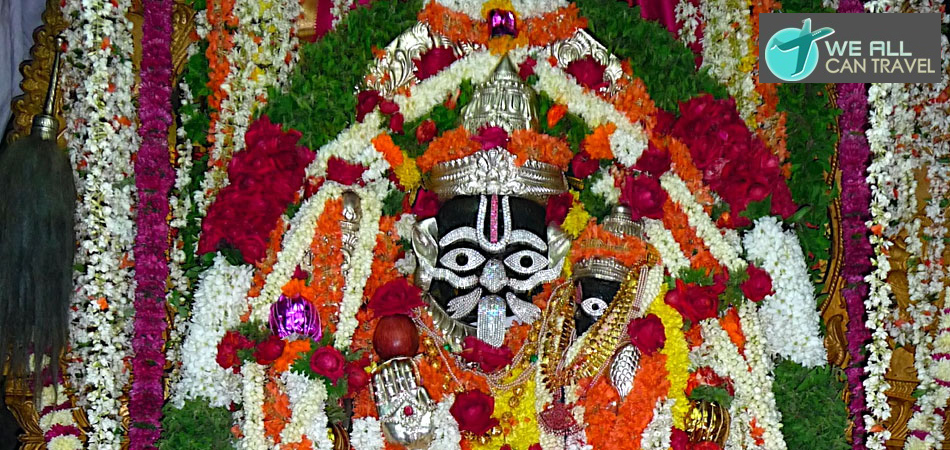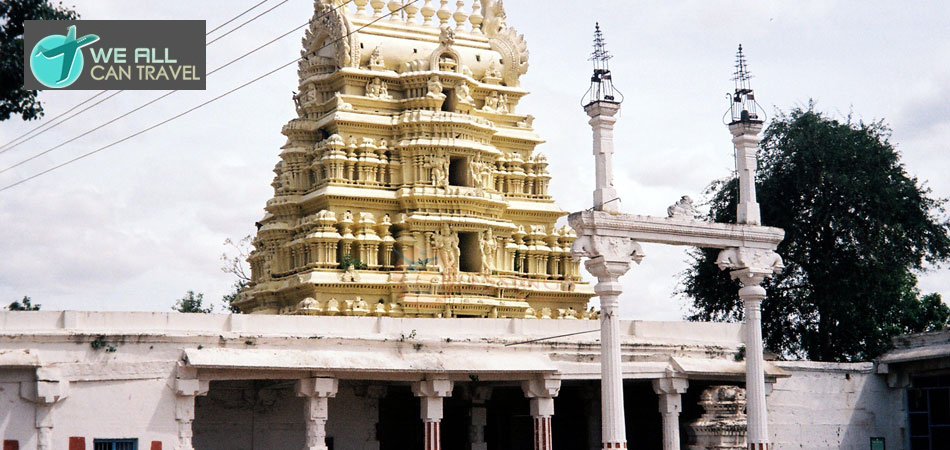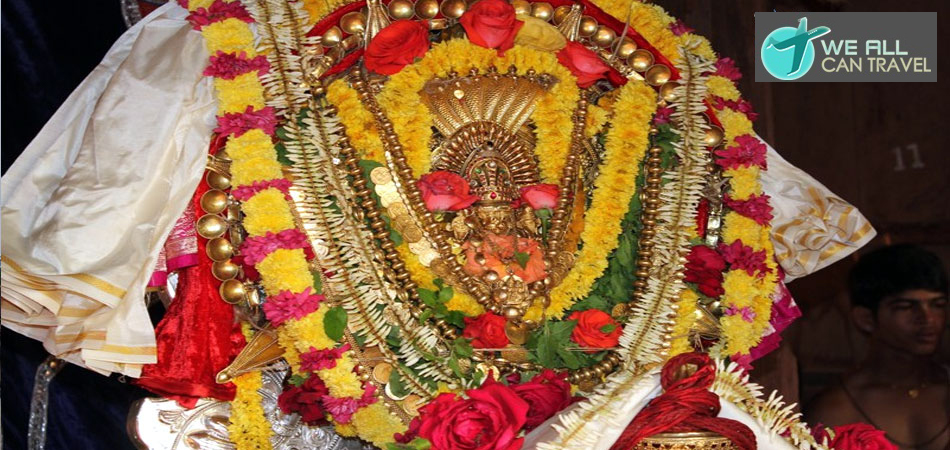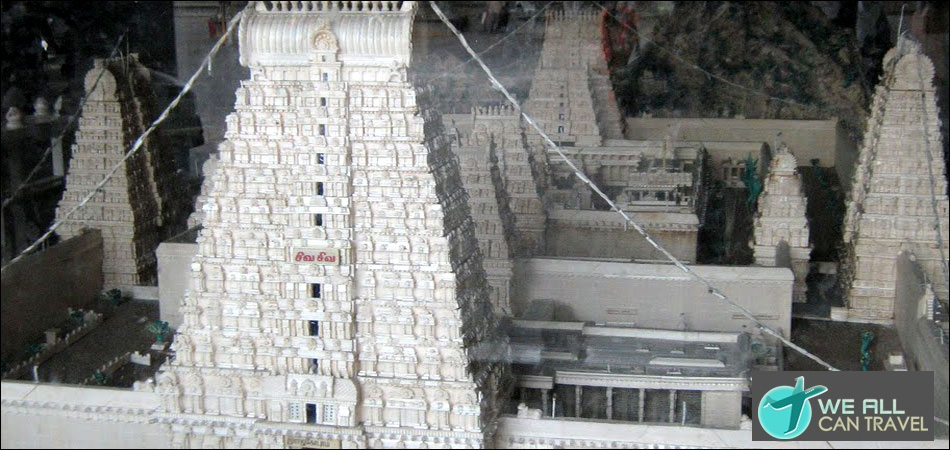- +1 416-553-8499
- Live chat
-
Pannaka Narasimhaswami Temple
- Home
- /
- Temples
- /
- Andhra Pradesh
- /
- Pannaka Narasimhaswami Temple

Mangalagiri means The Auspicious Hill. This place is one of the 8 important Mahakshetras (sacred places) in India.
At the foot of the Mangalagiri Hill, there is a shrine dedicated to Sri Lakshmi Narasimhaswami and His consort Rajya Lakshmi. The temple of Paanaka Narasimha is situated uphill. The temple Gopuras are unusually narrow and tall. It is customary to take bath at the holy tank Kalyana Saras and offer worship at the shrines of Prabhatya Anjaneya, Lord Malleshwara and Devi Bhramarambika. Then the pilgrims climb the hill to worship Paanaka Narasimha. There are well-laid steps to reach the temple. On the way, there are shrines of Lord Venkateshwara and the holy feet of Lord Vishnu, installed by Chaitanya Mahaprabhu, a Vaishnavite saint of Bengal.
Adi Shankara, Ramanuja and Vallabhacharya have visited the Paanaka Narasimha shrine.
Paanaka offering: In the sanctum, Paanakala Narasimha is worshipped in the form of a Swayambhu Murthi (self-manifested). The image is covered by a golden kavacha (mask). The mouth of the Lord is wide open and priests offer pots full of paanaka to the Lord. One can even hear the sound of gulping when the paanaka is poured. But the Lord takes only half of what the devotees offer. The remaining paanaka is distributed as prasadam.
A miraculous feature in this temple is that though the mandapa is always wet with jaggery water, not a fly or an ant is found in the area! The temple is open only till noon. The evening and night pujas are believed to be performed by the Devas.
There are shrines for Devi Lakshmi and Veera Anjaneya. On top of the hill, there is a small mandap, known as Kantalarayudukudi. Devotees light lamps here as an offering to ward off evil. Yudhishtra, the eldest of the Pancha Paandavas, is said to have installed the main deity in this shrine of Lakshmi Narasimhaswami at the foot of the hill. In commemoration of this, the wedding of the Lord with Devi Rajya Lakshmi is performed according to Kshatriya tradition (royal customs) during festivals. The divine consort and Lord Kothanda Rama are worshipped in separate shrines.
 >> Agasteeshwara Temple
>> Agasteeshwara Temple >> Anantha Padmanabhaswami Temple
>> Anantha Padmanabhaswami Temple >> Ananthasana Temple
>> Ananthasana Temple >> Annapoorneshwari Temple
>> Annapoorneshwari Temple >> Arunachaleshwar Temple
>> Arunachaleshwar Temple